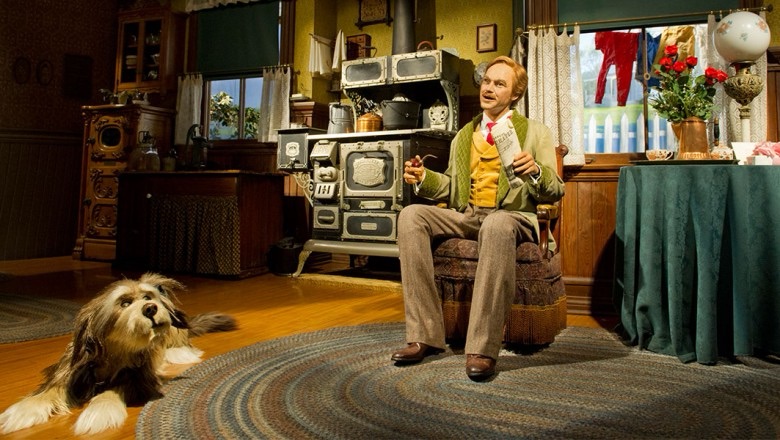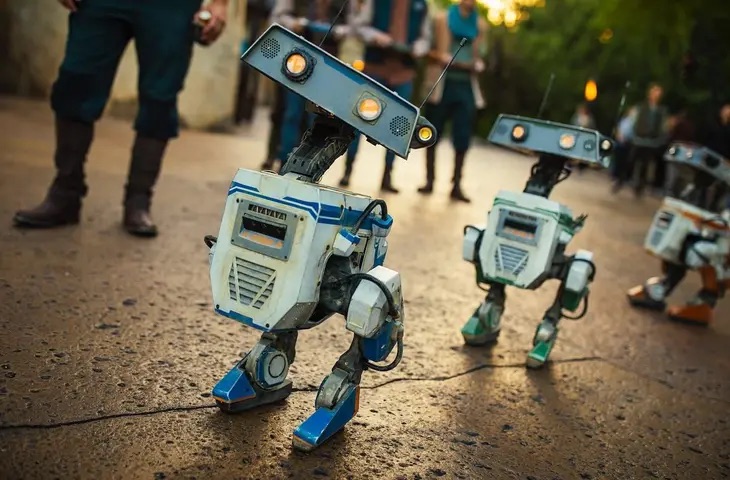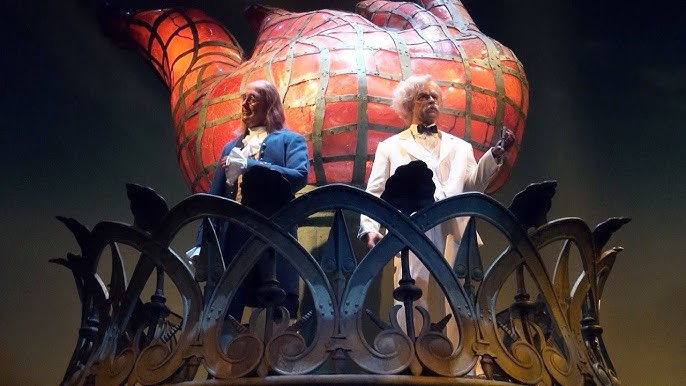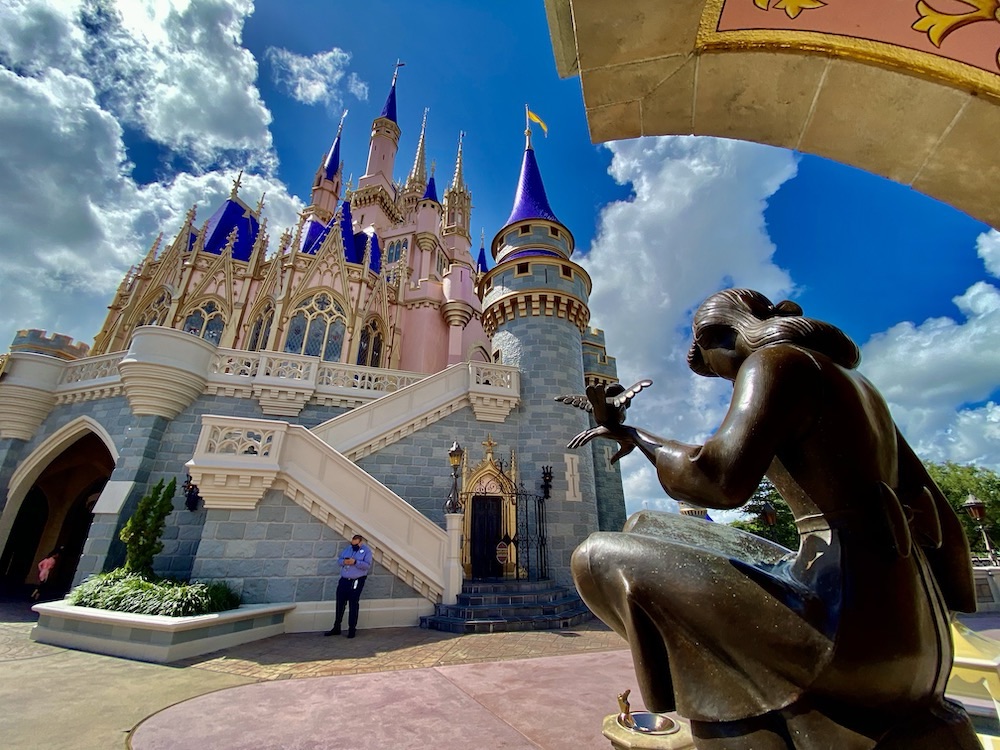Theme parks have long been the epitome of imagination brought to life, where stories leap off the screen and into the real world. Central to this magic are the animatronics that populate these worlds, from playful pirates to towering dinosaurs. The evolution of animatronics is a story of innovation, creativity, and technological advancement that has transformed static figures into lifelike characters capable of captivating audiences of all ages.
The Early Days: Mechanical Marvels
The origins of animatronics in theme parks can be traced back to the mid-20th century. One of the earliest examples of a mechanical figure used for entertainment was the “Dancing Man,” a figure created by the Wurlitzer Company in the 1930s. This early animatronic was a simple, hand-cranked figure that could perform basic dance moves. Though rudimentary by today’s standards, it was a marvel of its time, foreshadowing the potential of mechanical figures in entertainment.

Some of the earlier animatronic creations were powered by basic mechanisms like cams, levers, and solenoids, which were the building blocks of the first animatronics.
- Cams: A cam is a rotating or sliding piece in a mechanical linkage that converts rotary motion into linear motion or vice versa. In early animatronics, cams were used to create repetitive movements, such as a character’s arm swinging back and forth or a mouth opening and closing.
- Levers: Levers are simple machines that use a rigid bar pivoting around a fixed point to amplify force. In animatronics, levers were often employed to control movements like nodding heads or lifting limbs.
- Solenoids: A solenoid is a type of electromagnet used to convert electrical energy into mechanical motion. In early animatronics, solenoids were used to create quick, jerky movements, such as a character suddenly springing to life or turning its head.
These mechanical figures were impressive for their time, but they were limited in their ability to create realistic motion. They were often loud, with visible mechanisms that betrayed the illusion of life. Despite these limitations, these early animatronics laid the groundwork for what was to come.
Walt Disney and the Birth of Audio-Animatronics
The real breakthrough came in 1963 with the debut of Walt Disney’s “Enchanted Tiki Room” at Disneyland. This attraction was the first to feature Audio-Animatronics, a term coined by Disney to describe their electrically powered, synchronized robotic figures. The Enchanted Tiki Room showcased birds, flowers, and tikis that could move and sing in harmony, creating an immersive, magical experience for guests. Disney’s team, led by legendary Imagineer Marc Davis, had successfully integrated mechanical engineering with creative storytelling, setting a new standard for theme park attractions.

The first major showcase of this technology was at the 1964 New York World’s Fair, where Disney unveiled several groundbreaking attractions. Among them was “Great Moments with Mr. Lincoln,” which featured an animatronic Abraham Lincoln that could stand, sit, gesture, and speak. The figure’s lifelike movements and expressive face were a marvel of engineering and set a new standard for what animatronics could achieve.
The Inner Workings of an Audio-Animatronic
To truly understand the impact of Disney’s innovation, it’s important to dive into the inner workings of an audio-animatronic. These figures are a blend of mechanical engineering, electrical systems, and computer technology, all working in harmony to create the illusion of life.
- Mechanical Systems: The mechanical heart of an audio-animatronic is its skeletal structure, often made of lightweight materials like aluminum or steel. This structure is powered by a series of actuators, such as hydraulic or pneumatic pistons, which move the figure’s limbs and body. These actuators are controlled by cams, gears, and other mechanical linkages that translate rotary motion from motors into the desired movements.
- Electrical Systems: At the core of an audio-animatronic’s control system are its electrical components, including servo motors and microprocessors. Servo motors are specialized motors that provide precise control of angular or linear position, velocity, and acceleration. They are critical for the smooth and realistic movements of the animatronic’s joints. Microprocessors, on the other hand, are the brains of the operation, processing input signals and sending commands to the motors and actuators to execute the programmed movements.
- Audio Synchronization: What sets audio-animatronics apart is their ability to synchronize movements with audio. This is achieved through a process called “show programming,” where the audio track is meticulously timed with the movements of the figure. The microprocessor controls both the playback of the audio and the activation of the actuators, ensuring that the animatronic’s gestures and expressions match the dialogue or music perfectly.
The American Adventure and the Role of Show Control
As audio-animatronics evolved, so did the systems that controlled them. A prime example of this is “The American Adventure” at EPCOT, which features one of the most complex and sophisticated animatronic shows ever created. The attraction uses an advanced system known as Show Control to coordinate the movements of 35 animatronic figures, lighting, sound, and special effects.

Benjamin Franklin makes history come alive at Epcot’s American Adventure, as the sophisticated audio-animatronic walks up the stairs, bringing the past to life with unparalleled realism.
Show Control is a computer-based system that synchronizes all aspects of a show, from the precise timing of animatronic movements to the activation of lighting cues and sound effects. In “The American Adventure,” this system allows the animatronics to perform with a level of precision and realism that was previously impossible. The figures in the show move fluidly and naturally, interacting with each other and their surroundings in a way that enhances the storytelling experience.
The Modern Era: Lifelike Creations
As technology advanced, so did animatronics. The introduction of servo motors and microprocessors allowed for more precise and fluid movements, while advances in materials and robotics made it possible to create figures that looked and moved like real people or animals.
- Servo Motors: A servo motor is a rotary actuator that allows for precise control of angular position, velocity, and acceleration. It consists of a motor coupled to a sensor for position feedback. The servo motor receives a control signal that represents a desired output position and applies power to the motor to achieve that position. Servo motors are crucial in animatronics because they enable smooth, precise movements, such as a character’s subtle head tilt or a hand gesture.
- Microprocessors: Microprocessors are the brains behind modern animatronics. These small, powerful computing units process data and execute commands in real-time, allowing animatronics to respond to their environment, interact with guests, and perform complex sequences of movements. Microprocessors are programmable, meaning that animatronics can be updated and improved over time without the need for extensive hardware modifications.
Today’s animatronics are capable of incredibly lifelike movements, with the ability to express a wide range of emotions through subtle facial expressions and body language. This leap in realism is due in part to advancements in motion capture technology, which allows animators to record the movements of human performers and translate them into data that can be used to control animatronic figures. This technology has been used in attractions like “Guardians of the Galaxy – Mission: Breakout!” at Disney California Adventure, where animatronic figures of the characters Rocket Raccoon and Groot move and behave just like their on-screen counterparts.
Garner Holt: A Pioneer in Animatronics
No discussion of modern animatronics would be complete without mentioning Garner Holt, a true pioneer in the field. Garner Holt is the founder of Garner Holt Productions, one of the world’s leading creators of animatronic figures. His company has produced more than 5,000 animatronic figures for theme parks, museums, and attractions around the world.
Garner Holt began his career as a teenager, building his first animatronic figure in his parents’ garage. He quickly gained a reputation for his creativity and technical expertise, and in 1977, he founded Garner Holt Productions. Over the years, his company has been responsible for creating some of the most iconic animatronic figures in theme park history.
One of Holt’s most famous projects was the creation of the animatronic dragon for Disneyland’s “Fantasmic!” show. The dragon, which debuted in 2009, is one of the largest and most complex animatronic figures ever built, standing 45 feet tall and capable of breathing fire. The dragon features a fully articulated neck, wings, and tail, as well as realistic movements and expressions.

Another notable project was the refurbishment of the animatronic figures in Disneyland’s “Haunted Mansion” attraction. Garner Holt Productions was tasked with updating the figures to make them more lifelike and responsive while preserving the classic look and feel of the attraction. The result was a stunning blend of old and new, with the updated figures retaining their original charm while incorporating modern technology for improved performance.
Garner Holt has also worked on numerous international projects, including creating animatronic figures for attractions in Japan, China, and Europe. His contributions to the field of animatronics have been recognized with numerous awards and accolades, and his company continues to push the boundaries of what is possible in themed entertainment.
Career Advice for Aspiring Animatronics and Robotics Engineers
If you’re inspired by the world of animatronics and robotics and want to turn that passion into a career, there are several important steps you can take to set yourself on the right path. This field combines creativity, engineering, and a deep understanding of how to bring inanimate objects to life in a believable and magical way. Here’s what you need to know:
Educational Path: What Degree Should You Pursue?
For those interested in pursuing a career in animatronics and robotics, obtaining a relevant college degree is an essential first step. The most common degrees for this field include:
- Mechanical Engineering: This degree provides a solid foundation in the design, analysis, and manufacturing of mechanical systems. It’s particularly valuable for understanding the physical aspects of animatronics, such as movement mechanisms, material strength, and energy efficiency.
- Electrical Engineering: Animatronics heavily relies on electrical systems to power motors, sensors, and control units. A degree in electrical engineering will equip you with the knowledge to design and implement these systems, ensuring that the animatronics function smoothly and reliably.
- Computer Science/Computer Engineering: With the increasing integration of AI and machine learning into animatronics, a background in computer science or computer engineering is becoming increasingly important. This degree will teach you how to program the complex algorithms that control animatronic movements and responses.
- Robotics: A degree specifically in robotics is ideal for this career path, as it covers both mechanical and electrical engineering, along with computer science, in a specialized curriculum. This degree will give you a comprehensive understanding of how to design, build, and program robots, including animatronics.
Skills to Develop
Beyond formal education, there are several key skills you should develop to succeed in animatronics and robotics:
- Programming: Learn languages like Python, C++, and MATLAB, which are commonly used in robotics and animatronics for coding control systems and AI.
- 3D Modeling: Familiarize yourself with 3D modeling software such as AutoCAD, SolidWorks, or Blender. These tools are essential for designing the mechanical components of animatronics.
- Problem-Solving: Animatronics often involves troubleshooting and optimizing complex systems. Being able to think critically and solve problems efficiently is crucial.
- Creativity: While animatronics is deeply technical, it’s also an artistic field. Being able to think creatively about how to bring characters to life, how they should move, express emotions, and interact with their environment is invaluable.
- Collaboration: Animatronics projects often involve multidisciplinary teams. Being able to communicate and collaborate with professionals from different fields—like artists, engineers, and programmers—is essential.
Experience and Internships
Gaining practical experience is just as important as your education. Look for internships or co-op programs at companies specializing in robotics, animatronics, or themed entertainment. Participating in projects where you can apply your knowledge to real-world challenges will give you an edge in this competitive field.
Also, consider joining or forming a robotics club where you can work on projects, compete in robotics competitions, and collaborate with like-minded peers. This experience can be incredibly valuable when applying for jobs or advanced degree programs.
The Future of Animatronics: AI and Beyond
As we look to the future, the role of artificial intelligence in animatronics is set to grow. AI has the potential to revolutionize how animatronics interact with their environment and with guests, enabling more dynamic and responsive performances. Imagine animatronics that can “learn” from guest interactions and adapt their behavior accordingly, creating unique and personalized experiences.
We’re already seeing the beginnings of this with attractions like “Rise of the Resistance” at Disney’s Hollywood Studios, where AI-driven animatronics interact seamlessly with real-world actors and guests. As AI technology continues to advance, we can expect animatronics to become even more lifelike, with the ability to understand and respond to speech, recognize faces, and even exhibit emotions.
Furthermore, the integration of advanced materials, such as soft robotics, will allow animatronics to move in more organic and fluid ways, mimicking the movements of living creatures even more closely. The future of animatronics is one where the line between machine and life becomes increasingly blurred, offering endless possibilities for creating immersive and magical experiences.
In conclusion, the evolution of animatronics from simple mechanical figures to complex AI-driven characters is a testament to the power of human ingenuity and imagination. As technology continues to advance, the future of animatronics holds even greater promise, pushing the boundaries of what is possible and continuing to captivate and inspire audiences around the world.





